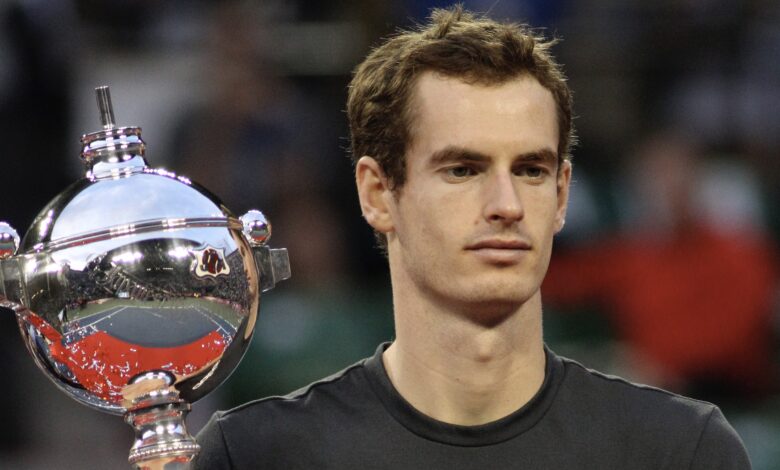Andy Murray’s Heartbreaking Confession: The Toll of Tennis on His Body

Andy Murray, one of Britain’s most successful tennis players and a three-time Grand Slam champion, has long been lauded for his resilience, work ethic, and determination. But beneath the accolades and victories, the 37-year-old has endured a painful and ongoing battle with his body—a battle that has taken a significant toll on his career and his personal life.
In a recent emotional interview, Murray opened up about the lasting physical consequences of years spent competing at the highest level of tennis, and the emotional strain that comes with trying to push his body past its limits. His heartbreaking confession sheds light on the often unseen side of elite sports: the wear and tear that can leave athletes grappling with chronic pain, injury, and difficult decisions about their future.
A Career Defined by Injury
Murray’s journey has been one of remarkable achievement, but it has also been marked by long stretches of injury and recovery. The Scot’s career was first threatened by a hip injury in 2017, an ailment that ultimately led him to undergo a career-saving hip resurfacing surgery in 2018. While the surgery was successful in allowing him to return to the court, it did not come without its complications. Murray’s body, particularly his hip, has continued to struggle under the strain of the demands of professional tennis.
In his recent confession, Murray revealed that despite his best efforts to maintain his fitness and competitive edge, the physical toll of his career is undeniable. “The pain doesn’t go away,” he said. “It’s something I have to deal with every day. There are moments when I just want to stop, but I can’t. It’s tough, it really is.”
The pain in his hip, which has been a constant companion for several years, has forced Murray to adapt his playing style, changing his technique to compensate for the discomfort. But no amount of adjustment or rehabilitation has been able to fully erase the toll that a decade of intense physical exertion has had on his body.
The Strain of Returning to the Top
After undergoing surgery, Murray made an impressive return to the ATP Tour, defying the expectations of many who thought his career might be over. However, the road to recovery has been anything but smooth. Despite his efforts to remain competitive, Murray has struggled to regain the level of form that once saw him dominate the sport. At times, he has had to fight not just against opponents but against the limitations of his own body.
“I’ve spent so much time rehabbing and trying to get myself back to my best physically, but it doesn’t always work out,” he confessed. “Some days are better than others. Some days, I can’t even practice the way I want to, and that’s hard to accept.”
The relentless cycle of rehabilitation and recovery, combined with the harsh realities of aging and injury, has led Murray to reflect on the future of his career in a way he never has before. His body, once capable of sustaining him through grueling five-set matches, now requires constant care and attention. At times, he’s found himself questioning whether the pain is worth the pursuit of more titles.
Mental and Emotional Toll
While Murray’s physical challenges have been widely reported, the emotional and mental toll that these ongoing struggles have taken on him has been less visible. In his recent interview, he spoke candidly about the emotional burden of dealing with constant pain and the uncertainty surrounding his ability to continue playing at the highest level.
“For a long time, I didn’t know whether I would be able to continue playing tennis,” Murray said. “There were moments where I thought this might be it, and it was heartbreaking. It’s hard not to feel frustrated when your body doesn’t do what it once did, when it betrays you after all the hard work you’ve put in.”
The mental strain of dealing with injury has, at times, been just as difficult as the physical pain. Murray has had to navigate feelings of isolation, uncertainty, and the fear that his career might come to a premature end. Yet, despite these challenges, his commitment to the sport and his desire to play professionally remain strong.
“I still love the game, I still love competing,” he said. “Even though it’s hard, I can’t imagine walking away from it completely. But at the same time, I have to be realistic about my body and what it can handle.”
The Reality of Retirement
As Murray continues to battle through his pain, he has also been faced with the looming reality that his time on the tour may be coming to an end. While he has not made any definitive decisions regarding retirement, he has acknowledged that the day is likely approaching when he will no longer be able to compete at the level he has for so many years.
“I don’t think I’ll be playing in my 40s, but I don’t know when that day will come,” he shared. “I just try to enjoy every moment that I can. Every time I step out on the court, I know that it could be one of my last matches, and that makes me appreciate the sport even more.”
Murray’s situation is a reminder of the physical and mental sacrifices athletes make in pursuit of greatness. While he has become a symbol of perseverance and grit, his struggles highlight the realities of a professional career in a sport as demanding as tennis.
The Legacy of a Fighter
Despite the setbacks and injuries, Andy Murray’s legacy is far from defined by pain. His determination to continue playing at the highest level, even when his body protests, has cemented his place as one of tennis’s all-time greats. Whether or not his body allows him to play for much longer, Murray’s story is one of resilience, tenacity, and unwavering love for the game.
As he continues to navigate the challenges of life on tour, Murray’s honesty about the toll tennis has taken on his body serves as a powerful reminder of the sacrifices athletes make behind the scenes. His courage to confront these struggles head-on only adds to his legacy, inspiring fans and fellow athletes alike to appreciate the true cost of sporting greatness.
In the end, Andy Murray’s fight against both his body and his own limitations is a testament to the spirit of an athlete who refuses to give up—even when the odds seem insurmountable.



